The Apple iPad Air 2 Review
by Joshua Ho on November 7, 2014 9:30 AM EST- Posted in
- Tablets
- Apple
- Mobile
- iOS
- ipad Air 2
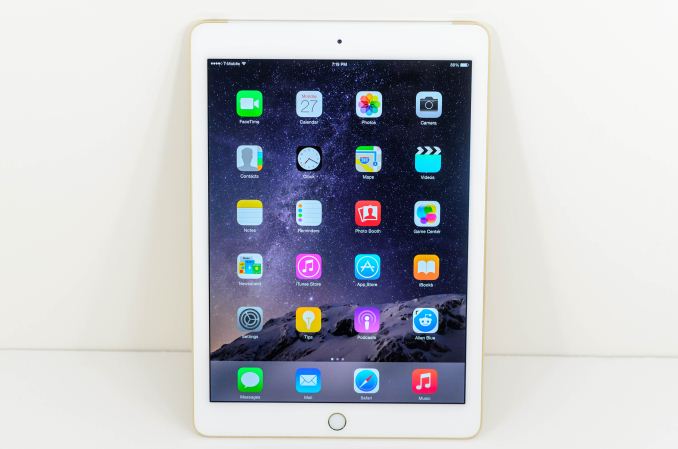
As we approach the holidays, Apple has launched a new iPad as expected. As one might expect from the name, the iPad Air 2 is more of an evolution of the original iPad Air than a clean-sheet design. This doesn’t mean that there’s little to talk about though, as Apple has gone a long way to improve every aspect of the iPad Air with this iteration. However, with this generation Apple seems to be under fire as Google attempts to push into the premium tablet space with the Nexus 9.
Without question though, the iPad line defines what an ARM-based tablet is. The iPad Air 2 is undoubtedly a part of this lineage with its focus on a large touch-screen display. This level of design minimalism is responsible for at least part of the original reaction to the tablet as a “large phone”. However, by virtue of its sheer size there are new possibilities opened up in terms of content consumption and even content creation. In the basic definition of a tablet, the iPad Air 2 definitely fits. There’s a new SoC, more RAM, a better display lens, new cameras, and an even thinner design, but all of these things don’t change the fact that this is a 9.7” display that can only be interacted with through a touchscreen. In the interest of saving space and time, I’ve included a spec sheet below to cover all bases.
| Apple iPad Air 2 | |
| SoC | 3x 1.5 GHz CPU A8X |
| RAM/NAND | 2GB LPDDR3 + 16/64/128GB NAND |
| Display | 9.7" 2048x1536 IPS LCD |
| Network | WiFi only or 2G / 3G / 4G LTE SKU |
| Dimensions | 240 x 169.5 x 6.1 mm, 437g WiFi, 444g LTE |
| Camera | 8MP Rear Facing with F/2.4 aperture, 1.3MP FFC |
| Battery | 7340 mAh (27.62 Whr) |
| OS | iOS 8.x |
| Connectivity | 802.11a/b/g/n/ac + BT 4.1, USB2.0, GPS/GNSS |
As with any other mobile device, one of the most immediate impressions one can form is that of design. This may be one of the most important areas as well, because every mobile device is constantly held or otherwise handled. These devices tend to be deeply personal as well, which means that there’s a great deal more emphasis on industrial design than a desktop tower that gets shoved into a dark corner for five years at a time.
To this end, the iPad Air 2 does quite well. The design is definitely separate from the iPhone 6 line, as the metal chamfer remains, but the form continues to be quite pleasing. On the front face of the tablet, we see a single 1.2MP camera, the display, and the home button which has TouchID built in. The glass is flat, which makes it seem noticeably different from the iPhone 6 line in that regard as it meets the chamfered edge of the back cover rather than making a seamless curve. The radius of the curve is also noticeably different as a result, simply curving in towards the center of the device rather than curving out of the device. If anything, this does make the iPad Air 2 feel a bit thicker in the fingers but the device overall is still incredibly thin.
Speaking of the back cover, there’s really almost nothing to speak of on the back cover. There’s the 8MP camera and a microphone hole, but not much else other than the large plastic RF window on the top edge of the tablet. The curve of the sides does make it seem like there’s a great deal more on the back cover though. Other than the RF window, there’s a power button and 3.5mm jack on the top of the tablet. Next to the power button are the volume buttons, but curiously no mute/lock rotation switch for this generation. I suspect that the reasons for this deletion are primarily due to user confusion, although my experiences are purely anecdotal in this regard. Finally, along the bottom of the device we see the Lightning port and two speaker grilles.
Overall, the design of the iPad Air 2 is impressive. The thin feel is really quite impressive when compared against other devices, but the weight no longer feels quite as incredible as the original iPad Air when compared to the iPad 4.
Outside of the physical design, Apple has also included a selection of two cases which include the smart cover and case, which are mostly unchanged from the previous generation except to fit the iPad Air 2. I don’t have much to complain about here although the smart case has a bit more flex on the sides than I’d like. The smart cover does have enough strength in the magnets to hold the tablet by the cover, although I wouldn't recommend doing this.


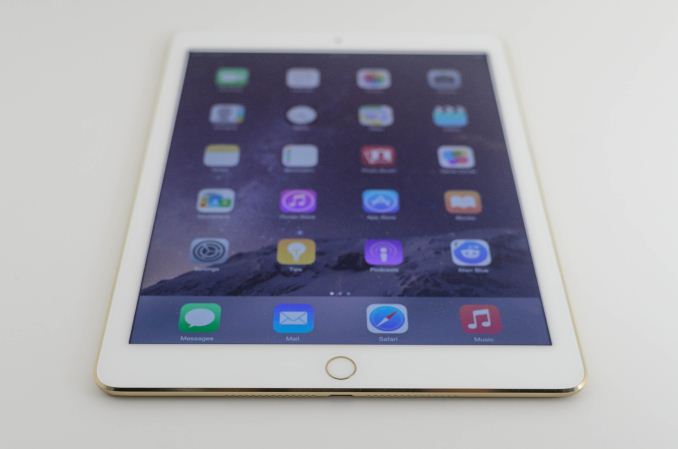
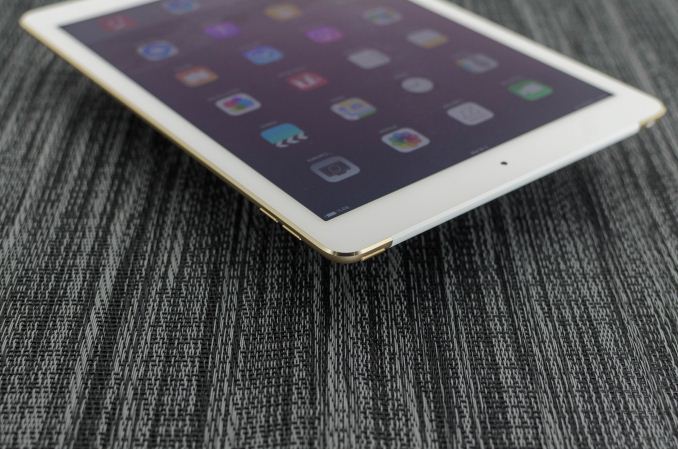
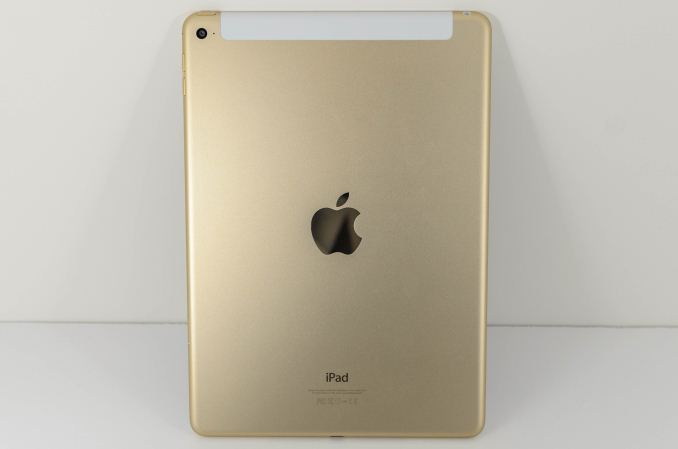

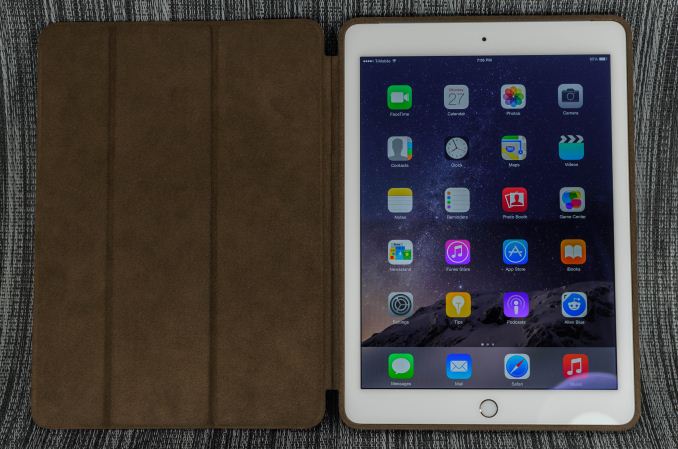








226 Comments
View All Comments
name99 - Friday, November 7, 2014 - link
Roughly Haswell IPC is equal to Apple IPC. There are lots of caveats to this --- Apple does better on Geekbench, Intel does better on SPEC (probably because they have a superior memory system). Intel also have, to be fair, a much more mature compiler, while Apple can probably squeeze another 10% out of LLVM for ARM64 over the next year or two, along with some improvements to the SPEC numbers when their long awaited polyhedral optimizations finally go mainstream.I used to think Apple would ramp to higher frequencies, now I think a different trajectory is more likely. An Intel CPU is a bundle of many capabilities, and the CPU part is only one of these. There's also, for example, the turboing subsystem, and the profiling/debugging subsystem. My guess is that they are (even though they have said nothing about it) headed for the same sort of HSA future that AMD talks about.
I expect over the next few years, much Apple work will go into this sort of less than sexy infrastructure, stuff that Apple won't talk about much (if at all) and it will only make its appearance in things like better XCode tools and much less overhead to transfer code and data between CPU and GPU. Looking at the competitive landscape, Apple look like they could get away with an A9 improvement that's to the A8 as the A8 is to the A7 --- a steady 25%, one third from compiler, one third from another 100 or 150MHz boost, and one third from more tweaking of the CPU.
It's possible that this is indeed what we should expect because I'd guess that Apple's A-team for CPU design is hard at work on the AWatch project, and probably following the same strategy as we saw with CPUs --- the S1 will probably be a good but not spectacular SoC, something reliable to get the project rolling, the equivalent of A5. S2 will presumably be a substantial jump, with all the less risky optimizations they couldn't fit into S1, while S3 will knock it out of the park, taking the risk of project slippage to make use of every good idea the team has.
If this theory is correct, It may not be until A10 or so, as the team has hired more people and the watch project becomes more stable, that we get a rethinking of the phone/tablet CPU.
[Of course by then, who knows, maybe Apple will have announced iDust and mote CPUs will be what their CPU A-team are working on?]
anquietas - Friday, November 7, 2014 - link
Good perspective! This sounds lIke exactly how Apple would operate.iwod - Saturday, November 8, 2014 - link
This. Most people when comparing ARM64 SoC to Intel often fail to count the difference between the software ecosystem. Intel had much more engineers and years of optimization in libraries, and compiler. There are still quite lot of work to do on ARM64 and LLVM.JoshHo - Friday, November 7, 2014 - link
While we haven't included the Surface Pro 3 in comparisons as it's a much more expensive device, all of the tests in this review and more have been released to Bench where you can compare the two SoCs.ABR - Friday, November 7, 2014 - link
Just got back from checking the iPad Air at a store, and the performance was disappointing to say the least. I've got an iPad 2, and I keep reading about these leaps and bounds in the SOCs each year, but when it comes to a real-world task like opening the Mail app or paginating a novel in iBooks, this supposedly mind-blowingly smoking device is only incrementally faster than my 2nd gen clunker. What gives?I thought maybe everything was being bottlenecked by the flash access, but Josh tested that too and of course it looked way ahead of earlier hardware in that area too. iOS slowdowns? I'm running 7 instead of 8 on the Air 2, but that's only one generation behind.
Anyone have any idea what the deal is?
rUmX - Friday, November 7, 2014 - link
You need to be performing more intensive tasks to see the huge peperformance differences, as benchmarks show. Opening mail is not very demanding.ABR - Friday, November 7, 2014 - link
I guess you're saying maybe there's a floor effect with Mail opening given by the animation timers if nothing else, but how do you explain iBook pagination? That takes several seconds and seems to be computatin limited.Sushisamurai - Friday, November 7, 2014 - link
If u can't tell a difference, then maybe u should hold onto your iPad 2. I sold my iPad2-32GB wifi model for $200, just to upgrade to this Air 2. My iPad2 was stuttering and dropping frames for the apps I was using (also on iOS8). This Air 2 is absolutely amazing compared to the iPad2 - some of my daily apps can load, and reload (after downloading a minor update), before my other iPad2 finishes loading LOLABR - Saturday, November 8, 2014 - link
Maybe it's iOS 8 then. Good way to sell hardware. The big performance drop going to 7 is one of the reasons I'm not going any further yet. I'd get the Air 2 for the weight, retina, and fingerprint, not the SOC, but the way it runs hot is a big downgrade.Streamlined - Friday, November 7, 2014 - link
FYI, I was doing some financial analysis on Apple and the iPad Air 2 cost structure and I'm estimating that the "Apple Tax" on these is probably only a little more than $100 per unit on the 16gb wifi model.Read the details at www.perezonomics.com